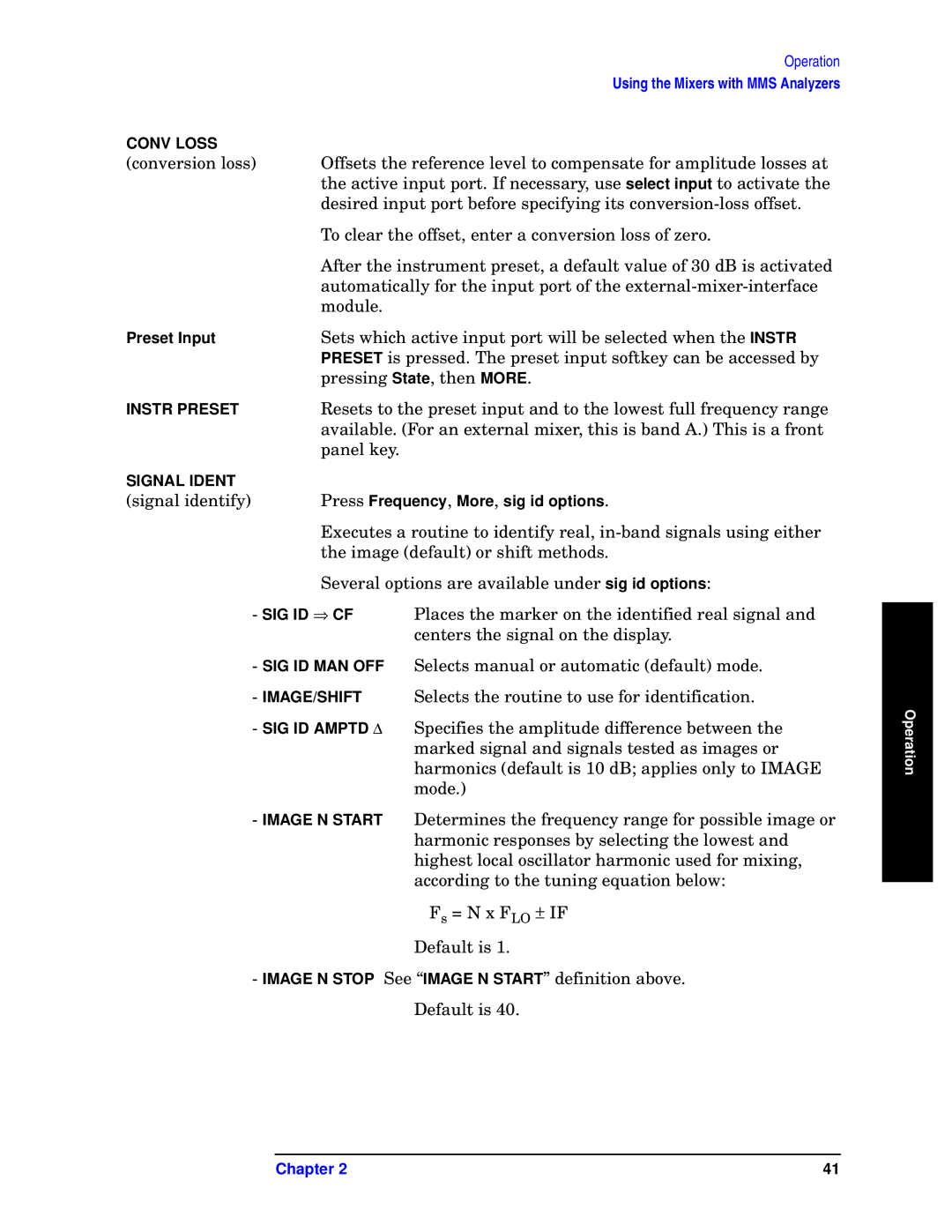
|
| Operation |
|
| Using the Mixers with MMS Analyzers |
CONV LOSS |
|
|
(conversion loss) | Offsets the reference level to compensate for amplitude losses at | |
| the active input port. If necessary, use select input to activate the | |
| desired input port before specifying its | |
| To clear the offset, enter a conversion loss of zero. | |
| After the instrument preset, a default value of 30 dB is activated | |
| automatically for the input port of the | |
| module. |
|
Preset Input | Sets which active input port will be selected when the INSTR | |
| PRESET is pressed. The preset input softkey can be accessed by | |
| pressing State, then MORE. | |
INSTR PRESET | Resets to the preset input and to the lowest full frequency range | |
| available. (For an external mixer, this is band A.) This is a front | |
| panel key. |
|
SIGNAL IDENT |
|
|
(signal identify) | Press Frequency, More, sig id options. | |
| Executes a routine to identify real, | |
| the image (default) or shift methods. | |
| Several options are available under sig id options: | |
- SIG ID ⇒ | CF | Places the marker on the identified real signal and |
|
| centers the signal on the display. |
-SIG ID MAN OFF Selects manual or automatic (default) mode.
-IMAGE/SHIFT Selects the routine to use for identification.
-SIG ID AMPTD ∆ Specifies the amplitude difference between the marked signal and signals tested as images or harmonics (default is 10 dB; applies only to IMAGE mode.)
-IMAGE N START Determines the frequency range for possible image or harmonic responses by selecting the lowest and highest local oscillator harmonic used for mixing, according to the tuning equation below:
Fs = N x FLO ± IF
Default is 1.
-IMAGE N STOP See “IMAGE N START” definition above. Default is 40.
Operation
Chapter 2 | 41 |
